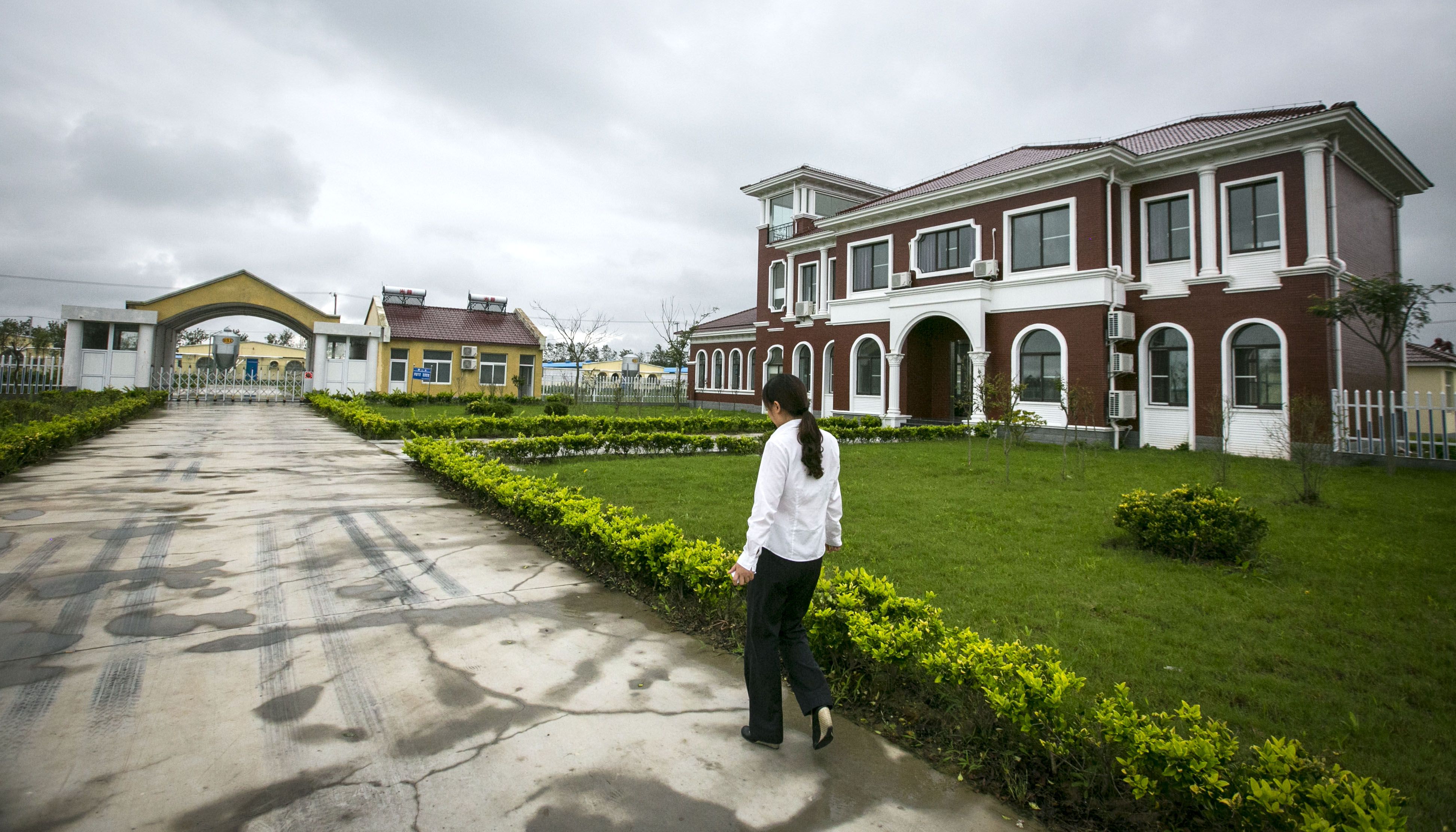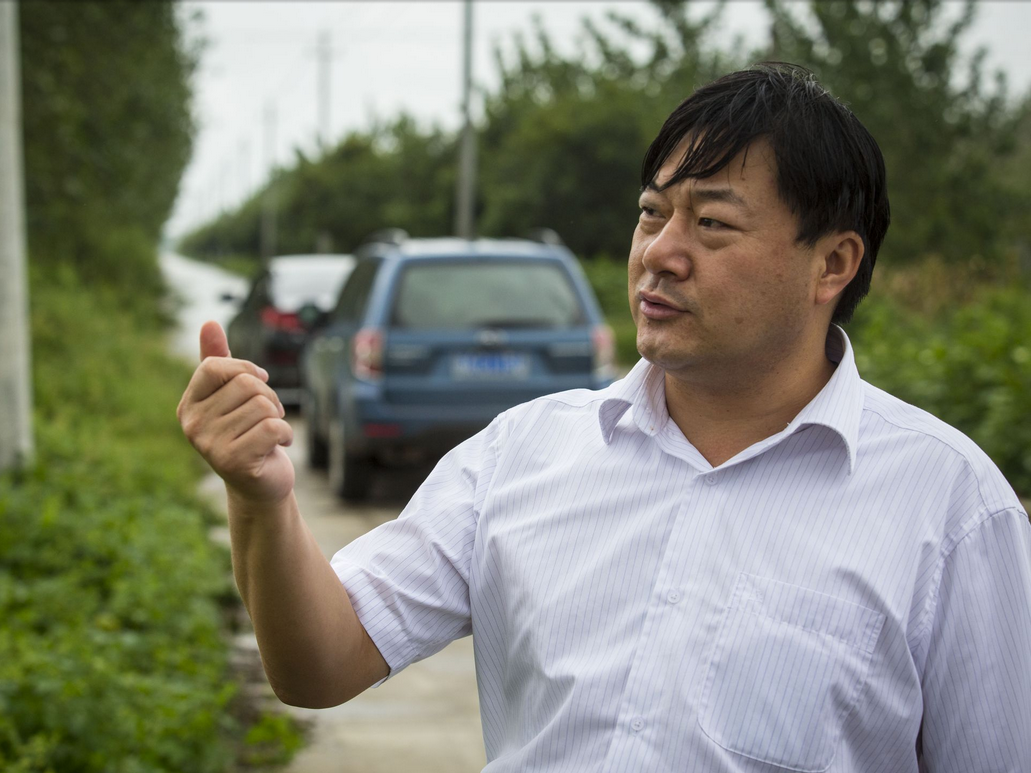If China can ever compete with Iowa pork producers, this may be the place.
Shang Hai Farm plans to double its hog production by 2016 — to 1 million pigs a year — to feed the growing demand for dumplings and other pork products in China's largest city, Shanghai, a 160-mile drive south of here. Its operations include automated, temperature-controlled facilities to fight disease and increase the number of pigs each sow produces.
"The best way to fight foreign competition is to improve productivity," said Zou Guang Bin, the head of livestock operations for Shang Hai Farm. "We don't need to import pork."
However, some experts believe expanding pork production is a losing battle for the Chinese. Importing more pork from Iowa and other U.S. producers would be a better economic bet, they say.
Chinese hog farms are notoriously inefficient, unsafe and environmentally damaging. Chinese production costs are at least double those in the U.S. because of high feed costs and disease problems, Iowa State University agriculture economist Dermot Hayes estimates.
The push to expand has sparked a massive wave of consolidation that is swallowing up smaller farmers in China. Some compare it to Iowa's farm crisis of the 1980s: Before then, most Iowa farms had pigs, but producers quickly had to go big or get out.
"It's the United States, 1984," said Chris Nelson, CEO of Kemin Industries. Only the most efficient producers survive. "That's what's happening in the Chinese countryside. It's all about capitalism."
His Des Moines-based company sells feed additives to producers, including Shang Hai Farm, to improve productivity and decrease reliance on antibiotics. Other U.S. firms are exporting breeding pigs and helping Chinese producers set up confinement operations.
"We're trying to give Chinese pork producers the most advanced technology in the world," Nelson said. Inevitably, he said, the producers who use that technology get bigger, while others go out of business.
Eating more pork
Pork is an important and growing part of the Chinese diet. The amount of pork the country produces and consumes is in dispute, but the average Chinese eats more pork than the average American. (Americans eat more meat overall, consuming more beef and chicken than do the Chinese.)
Pork consumption will rise as more people move to cities. Urban and middle-class Chinese eat much more pork than their poorer country cousins. The U.S. Department of Agriculture expects Chinese pork consumption to increase 17 percent by 2023-24.
That's one reason China is so sensitive about wanting to produce its own pork. Hayes, however, argues that China is hardly self-sufficient, because it relies so much on imported feed. China once grew most of the soybeans it needed, but in the mid-1990s, it began importing huge amounts from South America and the United States.
Another major feed source — Chinese-grown corn — is two or three times more expensive than on world markets, because of government price supports. Livestock producers pay the price. "Ten-dollar corn is killing them," Hayes said.
The price gets passed on to shoppers, who watch pork prices swing as China aims for self-sufficiency. "Consumers may eventually rebel against this policy," Hayes said.
The government's answer — U.S.-style concentrated animal feeding operations — actually increases the need for imported feed, Hayes said.
The Chinese are also growing concerned with the environmental and health costs of more pork production, said Fred Gale, a U.S. Department of Agriculture economist.
Half of the world's pigs are in China, primarily on the east coast, where Shang Hai Farm operates. The area has the world's highest concentration of people, pigs and poultry — a hot zone for viruses and other disease. The problem made international headlines in March 2013, when 16,000 dead, diseased pigs were found floating in the Huangpu River near Shanghai.
Lakes and rivers also have high concentrations of phosphorus from animal manure, and pig farms are blamed for nitrogen in the South China Sea. Gale said the big pork operations seldom use the manure for fertilizer.
As producers feed hogs antibiotics to promote growth, antibiotic-resistant "superbugs" are on the rise. Mindi Schneider, an agronomist and professor at the International Institute of Social Studies in the Netherlands, argues that industrial-sized operations are the true source of food safety problems, but smallholder farmers often get blamed.
"The industry in China is in many ways the same industry in the U.S. and elsewhere," Schneider said in a study this year on China's pork industry.
Nelson said the concern over antibiotics is real. Kemin sells feed additives, some made from oregano extract, that change the ecology of a pig's gut and reduce the need for antibiotics.
"Producers are more than willing to change," Nelson said, if a replacement can help their animals grow and breed as efficiently as they have on antibiotics.
Crown jewel farm
Shang Hai Farm, which is part of a state-owned company, is addressing the concerns. The company attempts to maximize China's limited arable land by creating a virtuous cycle: It grows grain and produces feed for hogs, and then uses their manure to fertilize 160,000 acres, which grows rice, vegetables, wheat, cotton and soybeans. "Land resources are short, so we use as best we can," Zou said.
The company plans to expand its pork production. It now has 20,000 sows, with a goal of 50,000 in 2016, and aims to double the nearly 500,000 pigs it produces each year. But to do so, Shang Hai plans to find more land to spread the manure.
Shang Hai has several hog farms, spaced miles apart to prevent disease from spreading. The oldest was built in 2003 and has no automation.
Its crown jewel is the Guang Ming breeder farm, a $6.2 million operation built in September 2013. The original breeding hogs were imported from France, and much of the equipment came from Kansas. The farm produces 30,000 pigs a year.
The first thing you notice is what's not there: odor. Workers monitor each part of the sanitized operation — including the artificial insemination lab, gestation stalls and farrowing room — via video screens in the control room. Videos show workers scraping manure off walls. Sows wear digital ear tags that transmit information, such as body weight and number of times they eat, to the control room.
The farm's 20 workers live in a dormitory next door to help prevent workers from bringing diseases from their hometowns.
Shang Hai boasts that its sows produce, on average, 22 pigs a year, compared with China's national average of 16. The U.S. average is about 25, and some operations in Iowa get 30, Hayes said.
Michael Boddington of Asian Agribusiness Consulting in Beijing points out that U.S. sows produced 16 pigs a year in the 1990s, and China can get the expertise to catch up.
"So, it's not impossible," he said. "But there needs to be a willingness to change."
How raising pigs has changed
Traditionally in China, farmers raised a few pigs in their lots or barns, feeding them food waste and vegetation.
Because of concerns about disease and inefficiency, the government has increasingly pushed confinement operations.
A look at who's producing the country's hogs now:
Backyard operations (fewer than 50 hogs) produced 37 percent of China's pork in 2010, and that's expected to shrink to about 27 percent by next year, a study by Rabobank shows. That's down from almost 75 percent in 2000.
Specialized farms (up to 1,000 head) produced 51 percent of the pork in 2010 and are expected to produce 57 percent next year, the study showed. These operators could be family farms or small companies, and some may produce under contract for larger companies.
Big commercial operations (more than 1,000 hogs) produced 12 percent in 2010 and are expected to reach 15 percent of all production next year.













